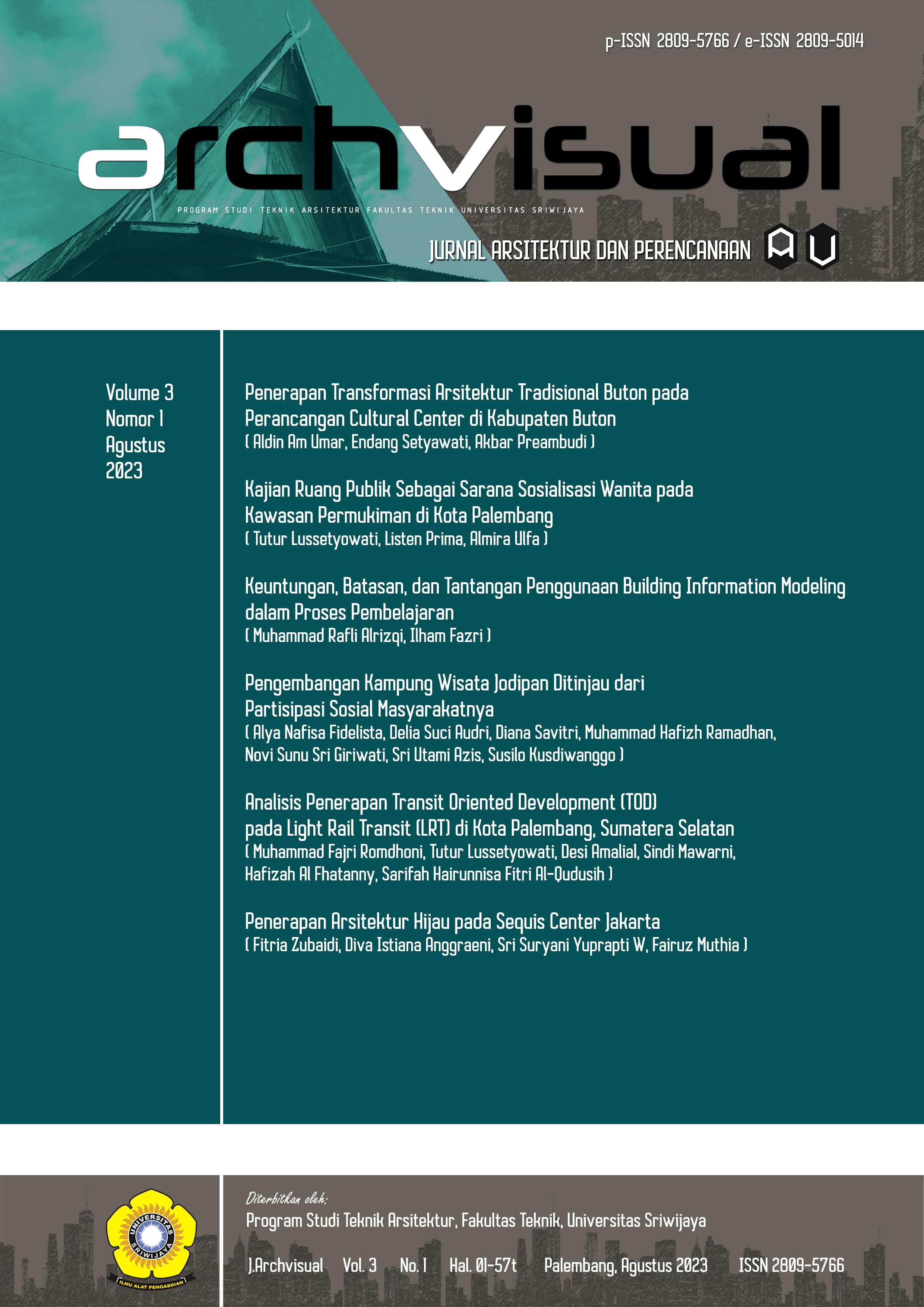Penerapan Transformasi Arsitektur Tradisional Buton pada Perancangan Cultural Center di Kabupaten Buton
Main Article Content
Abstract
Buton Regency is in Southeast Sulawesi, with a society that is thick with culture and traditions that have been passed down from generation to generation. However, along with technological developments, it has affected the interest of the Buton people in preserving local culture, especially in the younger generation who are starting to not care about local cultural values. The problem is, currently there is no place for the community of cultural activities and the place for the development of Butonese culture. One of the efforts to maintain local cultural values is the need for a forum for cultural actors and the development of local culture, in the form of a cultural center building, which can also be used as a tourism support facility in Buton district. The purpose of this study is to develop a cultural center building design concept in Buton district with a traditional architectural transformation approach. This approach is intended so that the traditional values of Butonese are realized in the architecture of the cultural center building, which can be a historical moment of traditional Buton architecture. The research method uses descriptive analytical methods, by uncovering existing data and analyzing it with the traditional Buton architectural transformation concept. The resulting design concept is a transformation of traditional architecture which is applied to: the mass layout; spatial patterns of Malige traditional houses; philosophy of mass forms; ornaments; and structures in the Malige Buton traditional house buildings.
Article Details
Section

This work is licensed under a Creative Commons Attribution-NonCommercial 4.0 International License.
How to Cite
References
BPS BUTON (2021). Kabupaten Buton dalam Angka, BUTON: BPS kabupaten Buton.
Darmawan, Y (2009) Naskah Buton, Naskah Dunia, BAU-BAU: Respect.
Krishna, R. C., D. I., G. H., & A. D. (2020) Cirebon Cultural Center dengan Pendekatan Arsitektur Hijau, Jurnal Poster Pirata Syandana, Vol. 2, No. 01, Dec. 2020., 151.
Lullulangi, Mithen & Rambulangi (2017) Arsitektur Tradisional Ramah Lingkungan. Gowa: Gunadarma Ilmu.
Maharani, S. A., Ayu, G. M., & Saputra, K. E. (2021). Transformasi elemen Rancang Bangun Tradisional dalam Tampilan Arsitektur Bangunan Kekinian, Jurnal Lingkungan Binaan Ruang Spasi, Vol. 8, No. 1 APRIL 2021, 61-78.
Mahardhika Sasono, A. P., & E. U. (2015). Kriteria Pengembangan Kawasan Wisata Budaya Jalan Besar Ijen Kota Malang. JURNAL TEKNIK ITS, Vol. 4, No.2, (2015), 100-103.
Muhammad Zakariah Umar, M. A. (2017). Makna Simbolis Pada Istana Malige. KOEKSISTENSI KONSEP MAKNA SIMBOLIK RUMAH KAUM.
Nayoan, S. J., & Mandey, J. C. (2011). Transformasi Sebagai Strategi Desain. Jurnal Arsitektur, Sains, Kota Permukiman Dan Lingkungan, Volume. 8 No. 2 (2011), 117-130.
Nuryanto, M. (2019). ARSITEKTUR NUSANTARA. BANDUNG: REMAJA ROSDAKARYA.
PERDA Kabuten Buton tahun 2014. Rencana Tata Ruang Wilayah Kabupaten Buton Tahun 2013 - 2033.
Rahmi, Siti Atika, 2016, Pembangunan Pariwisata Dalam Perspektif Kearifan Lokal, Jurnal Reformasi, vol 6 no 1, 2026.
Ronald, A. (2008). Kekayaan dan Kelenturan Arsitektur, Surakarta: Muhammadiyah University Press.
Rudyansjah, T. (2008). Kaomu, Papara dan Walaka : Satu Kajian mengenai Struktur Sosial dan Ideologi Kekuasaan di Kesultanan Wolio. Menyibak Kabut di Keraton Buton.
Saenal. (2020). Upaya Melestarikan Budaya Indonesia. Jurnal Dialetika Sosial Dan Budaya, Volume. 1 No. 1, 1-11.
Sanjaya, A. N., Wiji Utomo, B. J., & Hamka. (2018). Gedung Pusat Kebudayaan Jawa Timur Tema Arsitektur Metafora, Jurnal PENGILON, Nomor 01 Volume 2 Januari-Juni 2018, 15-30.
Syarifudi, Didin, 2016, Nilai Wisata Budaya Seni Pertunjukan Saung Angklung Udjo Kota Bandung, Jawa Barat, Indonesia, Jurnal Manajemen Resort & leisure, vol.13 no. 2, 2026
Wibawati, S. A. (2021). Strategi Pengembangan Wisata Melalui Potensi Wilayah Studi Kasus Jamun Spot Sunset (JSS) Desa Poncokusumo Kabupaten Malang. Jurnal Geografi, Edukasi dan Lingkungan (JGEL), Vol. 5, No. 1, Januari 2021, 52-60.

